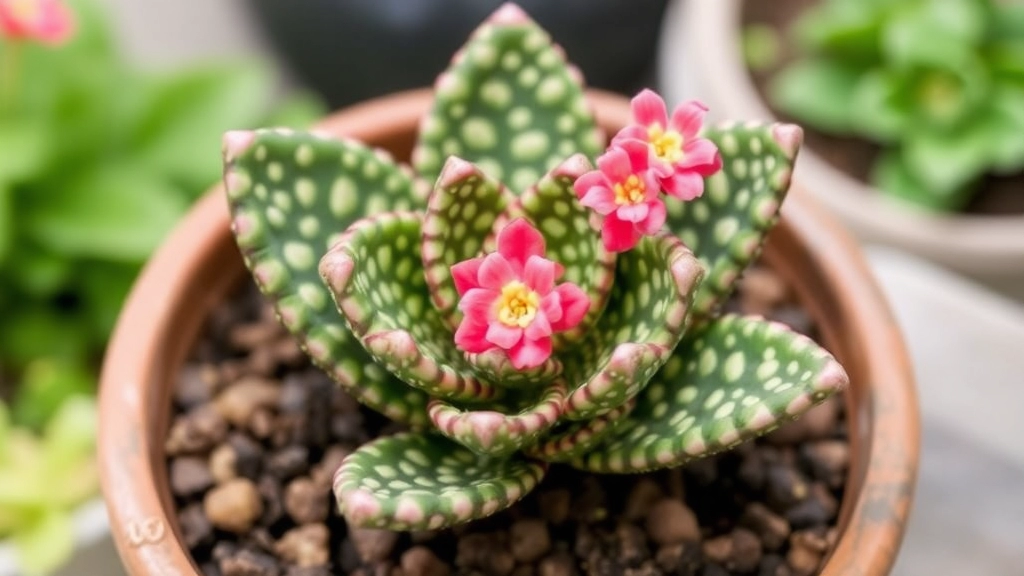Care for Leopard Mother Of Thousands Kalanchoe Daigremontiana
Ever wondered how to care for a Leopard Mother Of Thousands Kalanchoe Daigremontiana, also known as the Alligator Plant? I’ve got you covered. This fascinating succulent is not just a beauty to behold but also a plant that requires some specific care to thrive.
In this guide, I’ll walk you through the essential steps to ensure your Leopard Mother Of Thousands Kalanchoe Daigremontiana stays healthy and vibrant. From the right soil mix to watering tips, let’s dive into the world of this unique plant and make sure it flourishes in your home.
Overview of Leopard Mother Of Thousands
Are you curious about the fascinating world of Kalanchoe Daigremontiana, commonly known as Leopard Mother Of Thousands?
This unique succulent is not just a pretty face; it boasts a range of intriguing characteristics and benefits that make it a popular choice among plant enthusiasts.
What is the Leopard Mother Of Thousands?
Kalanchoe Daigremontiana, or Leopard Mother Of Thousands, is a striking succulent native to Madagascar.
Known for its ability to produce numerous âplantletsâ along the edges of its leaves, this plant can quickly fill a garden or indoor space with lush greenery.
Key Features:
- Leaf Structure: The leaves are thick, fleshy, and can grow up to 30 cm long.
- Plantlets: Each leaf can produce dozens of tiny plantlets that can easily root themselves.
- Growth Habit: It typically grows upright, reaching heights of about 1 metre.
This remarkable reproduction method is one of the reasons why it’s often referred to as the “Mother Of Thousands.” To learn more about the care and propagation of this plant, check out our detailed Kalanchoe Mother Of Thousands Care and Propagation Guide.
If you’re interested in exploring other varieties, you might find our Top Kalanchoe Mother Of Thousands Varieties and Care Tips particularly useful.
Unique Features of Kalanchoe Daigremontiana
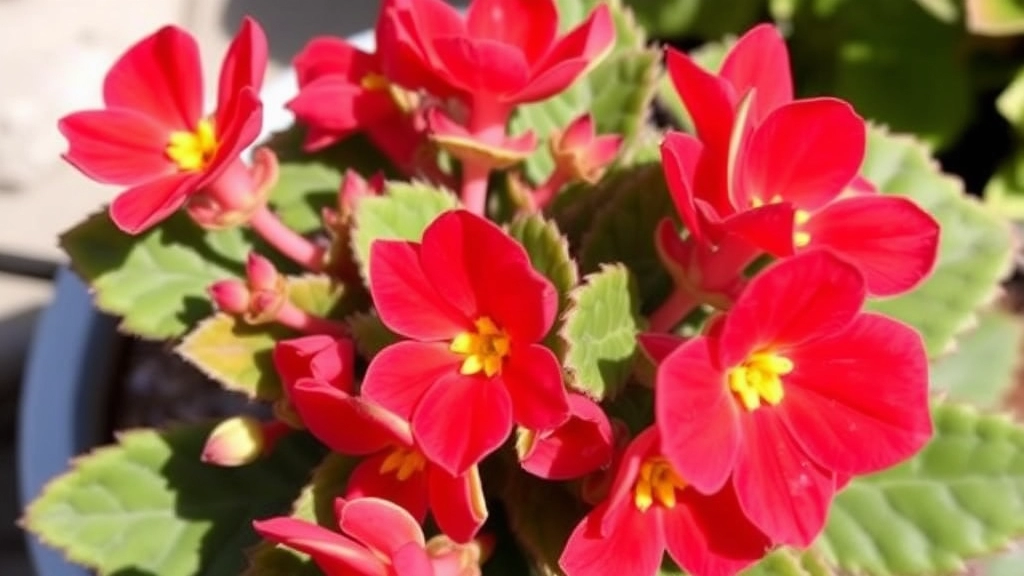
So, you’re curious about what makes the Leopard Mother Of Thousands stand out, right?
Well, let me tell you, Kalanchoe Daigremontiana is not just another plant in your garden. It’s a real showstopper with some unique features that you’ll want to know about.
Distinctive Leaf Structure
- Shape and Size: The leaves are thick, fleshy, and have a distinctive serrated edge. They can grow up to 30 cm long, making them quite the eye-catcher.
- Colour Variations: The leaves often have a beautiful green hue, but they can also display reddish edges when exposed to bright sunlight. It’s like the plant’s way of showing off!
Baby Plants Galore
One of the coolest things about the Alligator Plant is how it propagates.
- Plantlets: Tiny plantlets form along the edges of the leaves, ready to drop off and take root.
- Easy Propagation: This means you don’t have to do much to get new plants—just let nature do its thing!
Resilience and Hardiness
Kalanchoe Daigremontiana is a tough cookie.
- Drought Tolerant: It thrives in dry conditions, making it perfect for those of us who sometimes forget to water our plants.
- Adaptable: Whether you’ve got it indoors or outdoors, this plant can handle a variety of environments.
Aesthetic Appeal
Let’s not forget how stunning it looks.
- Unique Silhouette: Its upright growth habit and striking leaf shape create a stunning silhouette, adding character to any space.
- Versatile Decor: Whether in a pot on your windowsill or as part of a succulent garden, it’s sure to grab attention.
Growing Conditions for Alligator Plant
When considering the best environment for your Kalanchoe Daigremontiana, also known as the Alligator Plant, it’s essential to understand its natural habitat. This plant thrives in conditions that mimic its native tropical climate.
Light Requirements
The Alligator Plant loves bright, indirect sunlight. Here’s how to ensure it gets the right amount:
- Location: Place it near a south or west-facing window.
- Direct Sunlight: While it can tolerate some direct sunlight, too much can scorch its leaves.
Temperature
Kalanchoe Daigremontiana prefers warmer temperatures. Aim for:
- Daytime: 20-25°C (68-77°F)
- Nighttime: Not below 10°C (50°F)
Humidity
This plant is not overly fussy about humidity but prefers moderately dry conditions.
- Indoor Humidity: Average indoor humidity levels are sufficient.
- Avoid Excess Moisture: Ensure good air circulation to prevent fungal issues.
Soil Type
Choosing the right soil is crucial for the health of your Alligator Plant.
- Well-Draining Soil: Use a cactus or succulent mix.
- pH Level: A slightly acidic to neutral pH (around 6.0 to 7.0) is ideal.
Watering
Watering practices can make or break your plant’s health.
Propagation Methods for Mother Of Thousands
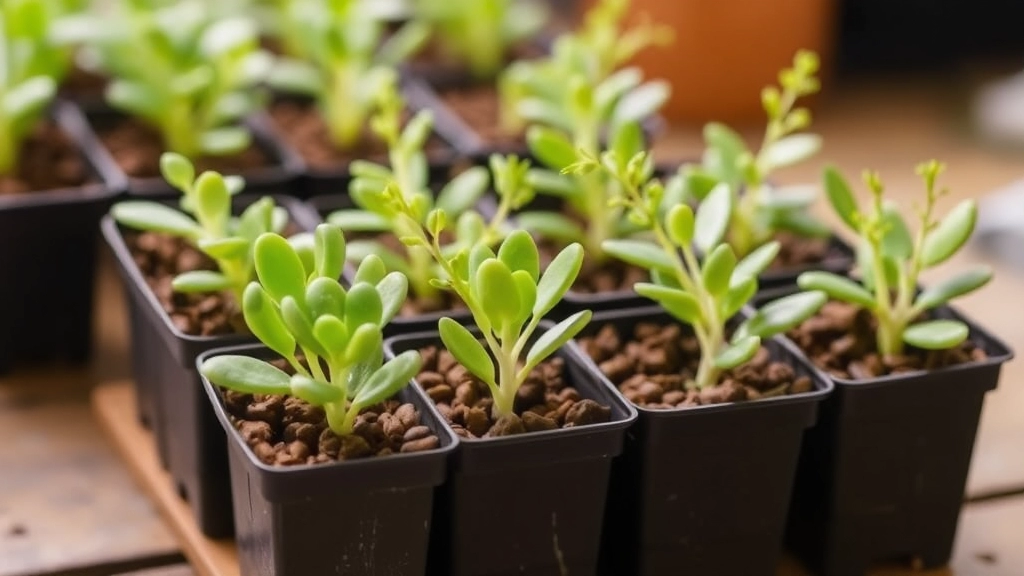
When it comes to propagating the Leopard Mother Of Thousands, or Kalanchoe Daigremontiana, many enthusiasts wonder how to successfully grow new plants from this unique species. The good news is that propagation is straightforward and can be done in several ways.
Leaf Cuttings
One of the simplest methods is through leaf cuttings. Here’s how you can do it:
- Select a Healthy Leaf: Choose a mature, healthy leaf from the parent plant.
- Cut the Leaf: Use a clean, sharp knife to cut the leaf at the base.
- Allow to Callous: Place the cut leaf in a dry area for a few days to allow the cut end to callous over.
- Plant the Leaf: Once calloused, place the leaf on top of well-draining soil and lightly press it down.
- Water Sparingly: Mist the soil lightly, but avoid overwatering.
This method is effective because the leaf can produce new plantlets along its edges.
Offsets
Another popular propagation method involves using offsets, or plantlets, that naturally develop on the mother plant.
- Identify Offsets: Look for small plantlets forming at the base or along the edges of the leaves.
- Gently Remove: Carefully twist or cut the offsets away from the parent plant.
- Let Dry: Allow the offsets to dry for a day or two to prevent rot.
- Plant in Soil: Place them in a well-draining potting mix and water lightly.
Offsets are often easier to propagate since they already have roots.
Seed Propagation
While less common, Kalanchoe Daigremontiana can also be propagated from seeds.
- Collect Seeds: If your plant flowers, collect the seeds once they have fully matured.
- Sow Seeds: Sprinkle the seeds on a surface of moist, well-draining soil without covering them.
- Maintain Moisture: Keep the soil consistently moist until germination occurs.
This method may take longer and requires more patience, but it can be rewarding.
Common Pests and Diseases
As we delve deeper into caring for the Leopard Mother Of Thousands, it’s crucial to address the common pests and diseases that may affect Kalanchoe Daigremontiana. Understanding these potential threats can help you maintain a healthy plant.
Common Pests
- Aphids:
- Small, soft-bodied insects that feed on the sap.
- Look for curled leaves or sticky residue.
- Mealybugs:
- White, cotton-like clusters found in leaf joints.
- They can weaken the plant significantly.
- Spider Mites:
- Tiny, often invisible to the naked eye.
- Look for fine webbing on leaves and speckled discoloration.
- Scale Insects:
- Small, hard shells that adhere to stems and leaves.
- Can cause yellowing and stunted growth.
Common Diseases
- Root Rot:
- Caused by overwatering and poor drainage.
- Signs include wilting and brown, mushy roots.
- Powdery Mildew:
- A fungal disease presenting as white powder on leaves.
- Can lead to leaf drop if not treated.
- Leaf Spot:
- Brown or black spots on leaves, often due to fungal infections.
- Can spread if not addressed promptly.
Prevention and Treatment
To keep your Leopard Mother Of Thousands thriving, consider these preventative measures:
- Regular Inspections: Check your plant weekly for any signs of pests or diseases.
- Proper Watering: Ensure the soil dries out between waterings to prevent root rot.
- Good Air Circulation: Space plants adequately to prevent humidity buildup.
- Neem Oil or Insecticidal Soap: Use these treatments at the first sign of pests.
For more detailed guidance on maintaining the health of your Kalanchoe plants, you might find the treating powdery mildew on Kalanchoe plants article helpful. Additionally, our Kalanchoe Mother of Thousands care guide offers comprehensive tips on light, soil, and watering requirements to ensure your plant thrives.
Caring for Kalanchoe Daigremontiana
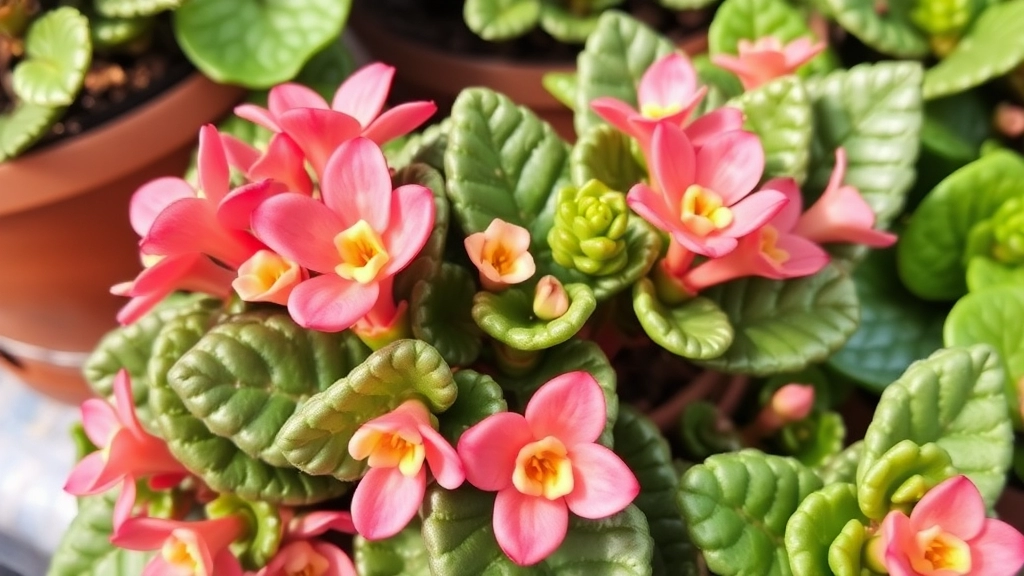
So, you’ve got your Leopard Mother Of Thousands, and now you’re wondering how to keep it thriving, right?
Caring for Kalanchoe Daigremontiana is pretty straightforward, but there are a few key things to keep in mind to ensure your Alligator Plant stays healthy and happy.
Light Requirements
- Bright, Indirect Light: This plant loves light but can’t handle harsh, direct sunlight.
- South or West-Facing Windows: Ideal spots for optimal growth.
Watering
- Let it Dry Out: Always allow the top inch of soil to dry out before watering again.
- Less is More: Overwatering can lead to root rot, so it’s better to err on the side of caution.
Soil Type
- Well-Draining Soil: A cactus or succulent mix works wonders.
- Add Perlite: This helps with drainage and keeps the roots happy.
Temperature and Humidity
- Warm Temperatures: Aim for between 18-24°C (65-75°F).
- Low Humidity: Kalanchoe Daigremontiana prefers dry air, so avoid overly humid environments.
Fertilising
- During Growing Season: Feed with a balanced, diluted fertiliser once a month from spring to summer.
- Skip in Winter: The plant goes dormant, so no need to fertilise then.
Pruning
- Remove Offsets: These little babies can crowd the plant. Snip them off to encourage growth.
- Dead Leaves: Keep it tidy by removing any dead or yellowing leaves.
Pest Control
- Watch for Pests: Keep an eye out for mealybugs and aphids. A quick wipe with a damp cloth usually does the trick.
Benefits of Growing Alligator Plant
As we explore the advantages of cultivating Kalanchoe Daigremontiana, it’s essential to consider how this unique succulent can enhance your gardening experience.
Aesthetic Appeal
One of the most immediate benefits of the Alligator Plant is its striking appearance.
- The distinctive, fleshy leaves with their charming scalloped edges create a visual interest that can brighten up any space.
- Its ability to produce small, vibrant flowers adds a pop of colour to your garden or indoor collection.
Low Maintenance
Kalanchoe Daigremontiana is perfect for those who may not have a green thumb.
- Drought-tolerant: This plant thrives on neglect, making it ideal for busy schedules.
- Minimal watering needs: Watering every few weeks is usually sufficient, especially during the growing season. For more details, check out this guide on common issues with Kalanchoe leaves.
Air Purification
Another remarkable benefit of the Alligator Plant is its potential to improve indoor air quality.
- Like many succulents, it can help remove toxins from the air.
- This contributes to a healthier living environment, making it an excellent choice for homes and offices.
Propagation Opportunities
Kalanchoe Daigremontiana is known for its unique propagation method, which can be both fun and rewarding.
- Each leaf can produce tiny plantlets, allowing for easy propagation. Learn more about propagating Kalanchoe from leaves.
- This means you can expand your collection or share with friends and family without significant investment.
Versatility
This succulent can thrive in various settings, making it a versatile addition to your plant collection.
- Indoor or outdoor: Whether you choose to keep it on a windowsill or in your garden, it adapts well to different environments.
- Container gardening: Its compact size makes it suitable for pots, allowing for creative arrangements.
Potential Toxicity and Safety Precautions
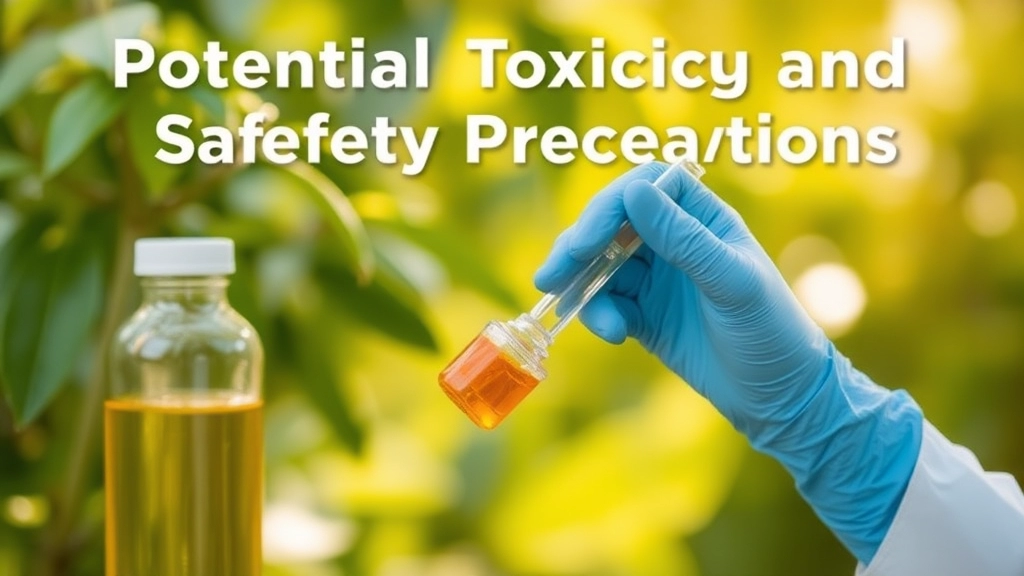
Have you ever wondered if your beloved Kalanchoe Daigremontiana, also known as the Leopard Mother Of Thousands, could pose any risks? You’re not alone. Many plant lovers have concerns about the safety of their green companions, especially when it comes to pets and kids.
Is the Alligator Plant Toxic?
Yes, Kalanchoe Daigremontiana is considered toxic to both humans and pets. Here’s what you need to know:
- Toxic Compounds: The plant contains compounds called bufadienolides, which can cause gastrointestinal issues.
- Symptoms to Watch For: If ingested, you might notice symptoms like vomiting, diarrhea, and in more severe cases, heart issues.
- Pets at Risk: Dogs and cats are particularly susceptible. If they munch on the leaves, it could lead to serious health problems.
Safety Precautions
To keep your home safe, here are some easy steps:
- Placement: Keep your Alligator Plant out of reach of pets and children. A high shelf or a hanging planter works well.
- Education: Teach kids about the plant and why they shouldn’t touch or eat it.
- Quick Response: If ingestion occurs, contact a vet or medical professional immediately. Having the plant’s name handy can speed things up.
What to Do if You Suspect Toxicity
If you’re worried about potential poisoning, here’s a quick checklist:
- Observe: Watch for any unusual behaviour in pets or symptoms in kids.
- Contact Professionals: Reach out to a vet or poison control for guidance.
- Stay Calm: Most cases are manageable with prompt action.
As we delve deeper into the fascinating world of the Leopard Mother Of Thousands, it’s essential to address some common questions that often arise among plant enthusiasts. Understanding these can enhance your experience with Kalanchoe Daigremontiana and ensure you provide the best care possible.
### What is the best light for the Alligator Plant?
The Leopard Mother Of Thousands thrives in bright, indirect sunlight.
– **Ideal Location:** A south or west-facing window is perfect.
– **Avoid Direct Sun:** Too much direct sunlight can scorch the leaves.
### How often should I water my Kalanchoe Daigremontiana?
Watering is crucial to the health of your Alligator Plant.
– **Frequency:** Water when the top inch of soil feels dry.
– **Seasonal Adjustment:** In winter, reduce watering as the plant enters dormancy. For more detailed information, you can refer to [how often do you water a kalanchoe plant](https://planthq.org/how-often-do-you-water-a-kalanchoe-plant/).
### Can I grow Leopard Mother Of Thousands indoors?
Absolutely!
– **Indoor Growth:** This plant adapts well to indoor conditions.
– **Considerations:** Ensure it gets adequate light and airflow.
### What should I do if my plant starts to droop?
Drooping can indicate several issues.
– **Overwatering:** Check for soggy soil. If so, let it dry out.
– **Underwatering:** Conversely, if the soil is too dry, give it a good drink.
### Are there any specific pests I should watch for?
Yes, pests can be a concern.
– **Common Pests:** Look out for mealybugs and aphids.
– **Prevention:** Regularly inspect your plant and maintain good air circulation. For more tips, you can check [complete care guide for Kalanchoe Daigremontiana Pink Butterflies](https://planthq.org/complete-care-guide-for-kalanchoe-daigremontiana-pink-butterflies/).
### Is the Leopard Mother Of Thousands safe for pets?
While beautiful, caution is advised.
– **Toxicity:** Kalanchoe Daigremontiana can be toxic to pets if ingested.
– **Precaution:** Keep it out of reach of curious animals.
### How can I encourage growth in my Alligator Plant?
To promote healthy growth, consider the following:
– **Fertilisation:** Use a balanced fertiliser during the growing season.
– **Repotting:** Repot every couple of years to refresh the soil.
FAQs about Leopard Mother Of Thousands (Kalanchoe Daigremontiana)
What makes Kalanchoe Daigremontiana unique?
Kalanchoe Daigremontiana, also known as the Leopard Mother Of Thousands or Alligator Plant, stands out due to its distinctive leaf structure, easy propagation through plantlets, resilience in various conditions, and aesthetic appeal.
How does the Alligator Plant propagate?
The Alligator Plant propagates through several methods: leaf cuttings, offsets (plantlets that form on the mother plant), and seeds. The most common method is through plantlets that form along the edges of its leaves.
What are the light requirements for Kalanchoe Daigremontiana?
This plant thrives in bright, indirect light. Ideal locations are south or west-facing windows to ensure optimal growth.
How often should I water my Leopard Mother Of Thousands?
Allow the top inch of soil to dry out before watering again. Overwatering can lead to root rot, so it’s better to water sparingly.
What type of soil is best for Kalanchoe Daigremontiana?
A well-draining soil is essential. A cactus or succulent mix, possibly with added perlite, works wonders for this plant.
Is Kalanchoe Daigremontiana toxic?
Yes, the plant is considered toxic to both humans and pets due to compounds called bufadienolides. Ingestion can cause gastrointestinal issues and, in severe cases, heart problems.
What are the temperature and humidity preferences for this plant?
Kalanchoe Daigremontiana prefers warm temperatures between 18-24°C (65-75°F) and low humidity. Avoid overly humid environments to keep the plant healthy.
How should I fertilise my Alligator Plant?
Feed with a balanced, diluted fertiliser once a month during the growing season (spring to summer). Skip fertilising in winter when the plant goes dormant.
What are some common pests and how can I control them?
Keep an eye out for pests like mealybugs and aphids. A quick wipe with a damp cloth usually suffices to keep these pests at bay.
What should I do if my pet ingests Kalanchoe Daigremontiana?
If ingestion occurs, contact a vet immediately. Watch for symptoms like vomiting and diarrhea, and keep the plant’s name handy to speed up the consultation process.
How can I safely keep a Leopard Mother Of Thousands in a home with pets or children?
Place the plant out of reach, such as on a high shelf or in a hanging planter. Educate children about the plant’s toxicity and ensure quick action if ingestion occurs.
References
-
Kalanchoe Daigremontiana (Mother of Thousands) Plant Profile
-
Mother of Thousands Plant: How To Care For A Mother Of Thousands
-
How to grow kalanchoe
